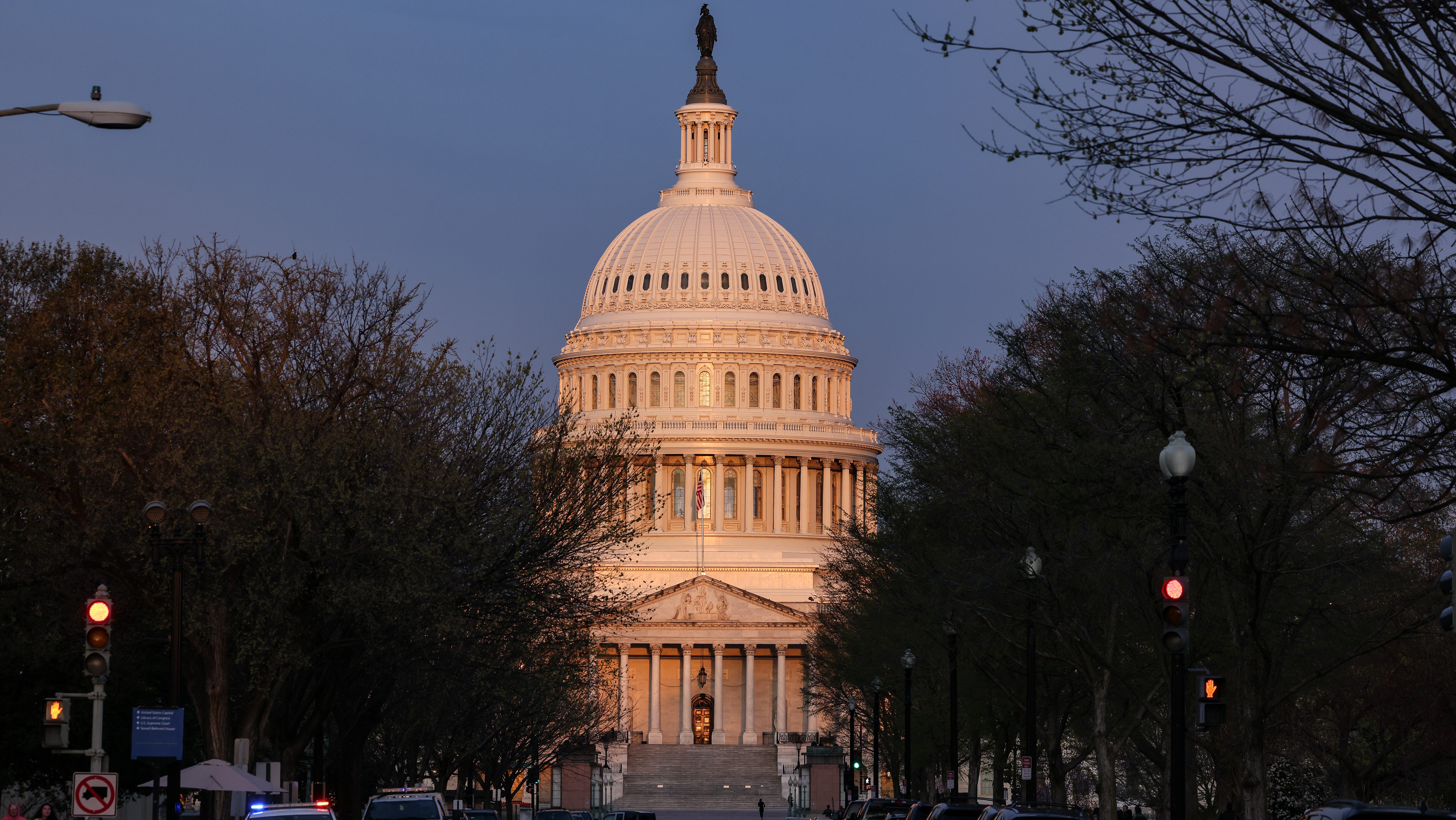For Albert Corado, talk of reforming the current Los Angeles Police Department is pointless, implying that there is something worthwhile about an agency he has been driven to dismantle since an officer’s bullet struck and killed his younger sister during a shootout at a Trader Joe’s grocery store. He has no confidence that its officers will change the way they treat the community they are meant to protect.
His sister, 27-year-old Melyda Corado, an assistant manager at the store in the Silver Lake neighborhood, was shot two years ago as police returned fire with a gunman who led them on a car chase, then ran into the Trader Joe’s. They feared a mass shooting and did not violate department policy by shooting toward a crowed store, the city’s police commission ruled.
But her family says in a lawsuit that officers used excessive force and were inadequately trained, among other charges.
Albert Corado said the department took his sister from him and, “For that I am going to destroy them." For now, he's advocating for a big shift in money from the police department to social programs.

Since George Floyd died after a Minneapolis police officer kneeled on his neck for several minutes, widespread Black Lives Matter protests have demanded sustained changes to how police departments operate. Communities across the country are grappling with how to end the deaths of unarmed Black men and women at the hands of police. Some such as Minneapolis want to disband their police departments, while others, among them Los Angeles and New York, are cutting their budgets drastically.
What can be done in the near future to stop those fatal encounters? Here are some ideas from politicians who are grappling with the problem, criminal justice experts who have been studying it and activists who have taken to the streets.
U.S. & World
What Federal, State, Local Legal Action Looks Like
A coalition of law school faculty released in mid-June “Changing the Law to Change Policing: First Steps," a list of what it said were urgently needed reforms. The professors, all associated with centers focused on policing and criminal justice, provide actions that officials at all levels of government, from federal to local, can take immediately to transform policing.
The report is designed in a drop-down way — recommended federal changes first, then if those are not made, state changes, and finally municipal ones, said Barry Friedman, director of New York University’s Policing Project and a member of the coalition.
At the federal level, the report calls for legislation to eliminate qualified immunity, which protects police officers and other government officials from personal liability in federal lawsuits unless they violate what the Supreme Court termed “clearly established” federal law.
Municipalities, which should be responsible for the actions of their police officers, would be primarily responsible for the increased liability and be under pressure to bring about reform, while courts could be forced to establish the constitutional standards of policing clearly, the report says.
The report also recommends creating national standards for the use of force, which Congress could enforce through federal grants and federal accreditation or through the Fourteenth Amendment, which guarantees due process and equal protection under the laws. Legislators could enact laws to enforce those guarantees and make clear that the use of force must be proportionate and necessary and that lethal force should be a last resort, the report says.
That is the approach argued for in a column in Bloomberg Law by Rebecca Brown and Omar Noureldin of the USC Gould School of Law, “Congress Has Constitutional Power to Set National Police Conduct Standards.” They write that Congress could build a record establishing a history and pattern of excessive use of force against people of color that violates those Fourteenth Amendment protections.
“They’ve got the power but they’re reluctant to use it,” Friedman said.
President Donald Trump did sign an executive order in June that requires the attorney general to create a database tracking firings, criminal convictions and civil judgments against law enforcement officers for excessive use of force. It limits some grants to agencies that submit the information.
But Congress is stalled over reform bills, with Democrats and Republicans and the House and the Senate at an impasse. Each side blames the other, though leading civil rights organizations have opposed the GOP bill as “watered-down legislation” that is not bold enough. Republican Sen. Tim Scott of South Carolina, who introduced the Senate proposal, has said that he continues to talk to senior House Democrats.
The Democratic-led House would create a national database of excessive-force encounters, limit legal protections for police and ban police chokeholds. The GOP in the Senate is calling for an enhanced use-of-force database, restrictions on chokeholds and new commissions to study law enforcement and race. For more details on each plan:
And here are some other immediate steps outlined in The “Changing the Law to Change Policing” report.
At the federal level:
- Protect First Amendment rights
- Limit “No Knock” entries by law enforcement
At the state level:
- Limit or regulate the use of traffic or pedestrian stops and searches
- Restrict arrests of low-level offenses and discourage ones where summons and citations could be used instead
- Implement policies for releasing footage of body cams, which were meant to ensure police accountability
- Record interrogations
- Reexamine the law governing contracts with police unions, which sometimes protect their members at the expense of accountability. The unions should participate.
At the local level:
- Prevent police from buying equipment without legislative approval
- Budget adequate money to address social problems such as poverty or substance abuse
- Consider consolidating small police departments.
Another federal proposal comes from the Movement for Black Lives, a coalition of more than 150 organizations, which would transform the nation's criminal justice system by eliminating agencies such as the Drug Enforcement Administration and the use of surveillance technology. It is called the BREATHE Act and is likely to be dismissed as radical by many lawmakers. More on the proposal can be found here.
New York University’s Policing Project, for which Friedman is the faculty director, collaborated with the Camden Police Department in New Jersey to revise its use of force policy. It requires officers to do everything possible to respect human life, avoid unnecessary force and minimize the force used while protecting themselves and the public. It also helped to launch Chicago’s Neighborhood Policing Initiative, which aims to transform the way the city’s police department engages with the community, particularly communities of color.
Police are now responding to situations for which they are not trained and as a result causing harm, Friedman said. The Policing Project has been looking at ways to address social problems that law enforcement cannot handle alone and at ways government agencies can work together.
"Many Americans now calling to defund or abolish the police live in neighborhoods plagued by crime, violence and the array of social problems born of poverty and social and economic isolation," Friedman wrote in the Wall Street Journal in June in "Amid Calls to 'Defund,' How to Rethink Policing." "They profoundly wish for peace and safety in their neighborhoods and understand how essential those conditions are for economic development and the education of their children. Their call to start over with policing is a function of how badly the police have failed them."
What the Largest Cities Are Doing -- And What They Aren't
In Minneapolis, the City Council voted to create in place of its police department a new department of community safety and violence prevention. The new department would prioritize what the city is calling a holistic, public health-oriented approach, while encompassing a much smaller division of law enforcement. The change must go before voters for approval.
But the country's largest cities have so far been more conservative. Los Angeles and New York are re-allocating money but leaving their police departments intact.
The Los Angeles City Council voted July 1 to cut $150 million from the police department’s budget for the next fiscal year and to use the money for underserved areas and communities of color. One city councilman wants armed officers to stop handling traffic infractions such as broken tail lights and expired license plates.
The Los Angeles Police Department operated under federal oversight for more than a decade until 2013. Court-approved agreements between the Department of Justice and police departments accused of civil rights violations and police misconduct were widely used during the Obama administration as a way to bring about improvements.
But after Trump took office, and particularly under his first attorney general, Jeff Sessions, their effectiveness as a tool was severely curtailed. Sessions argued that the consent decrees took accountability away from elected officials.
New York City, with the country's largest police department, is cutting $1 billion from its $6 billion budget, and shifting responsibility for homeless people on the streets and other tasks elsewhere. Critics argue it is the wrong move while crime is rising.
Meanwhile, New York's Attorney General Letitia James is proposing police reforms she says should be enacted quickly after violent encounters between police and protesters during recent demonstrations. She would have an independent panel replace the mayor for appointing the police commissioner and supervising the hiring and firing of officers.
"Police should be prohibited from employing such a disproportionate response and be prohibited from using deadly physical force where there is no use or imminent use of severe physical force or deadly force," she wrote in a report detailing officers' behavior toward demonstrators.
Chicago, where the police department currently operates under a consent decree enacted after the killing of Laquan McDonald by a city police officer, is looking at how other cities redirect 911 calls to social workers and others more suited to handling particular emergencies. Mayor Lori Lightfoot, a former federal prosecutor, wants more transparency and licensed officers.
She called defund police a “nice hashtag” in an interview with Politico.
"Defund the police," a chant at many of the protests, typically does not mean abolishing policing but rather moving funds away from police departments to other agencies.
In mid-June, a report from the independent monitor overseeing the federal consent decree found that the city missed more than 70% of the deadlines for reforms it is supposed to make under the decree.
“We can do better,” Lightfoot said then, and promised the city would redouble its efforts.
But activists are demanding that the police department be defunded by 75% and want the money to be invested instead in social services and community programs. They are insisting that officers who have multiple complaints against them to be fired.
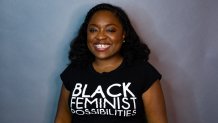
“Our mayor is not in support of our demands, and continues to actually get in the way and prevent us from moving forward,” said one activist, Charlene Carruthers, a community organizer for racial justice.
She and others reject calls from some Democratic leaders that activists steer clear of defunding police. She has noted that Black women in particular have been especially loyal backers of the Democratic party.
“We have our eyes on the prize of organizing our people, and engaging with the elected officials who are going to champion our work,” she said. “Our primary focus isn’t just on the people who are against us. We believe that there are way more people who are with us.”
Sources: 1. Fatal Encounters, a national database of people killed during interactions with law enforcement as of July 1, 2020. 2. Washington Post database of fatal police shootings from January 2015 to June 9, 2020. 3. Washington Post, American Community Survey, 2018. 4. Washington Post 5. Washington Post 6. Mapping Police Violence
Credit: Amy O’Kruk/NBC
Police departments and communities must cooperate on changes, said Tracie Keesee, a co-founder and senior vice president for justice initiatives at the Center of Policing Equity at John Jay College in New York City.
The center has been talking about next steps that departments can take to start: looking at who is calling 911 and what the calls are about -- then mapping that information to look for patterns. For example, if a number of mental-health calls come from a particular neighborhood, other agencies could be brought in. The center is starting to see police chiefs speaking with their officers, and the unions in some cases, about what is being asked of the department, she said.
“A lot of this again has to be defined and directed by the community,” she said.
The Center for Policing Equity had worked with the Minneapolis Police Department, which beginning in 2016 started to track the race and gender of drivers stopped by police and report use-of-force data online. Officers were required to activate their body cameras the minute they responded to 911 calls. Refusal to cooperate with an investigation was considered misconduct. Officers were to issue repair vouchers to drivers stopped for broken taillights and to stop arresting homeless people for gathering in warm spots.
The department established a "duty to intervene" policy, which requires officers to stop colleagues from using excessive force. That policy enabled the firing of three officers who witnessed George Floyd's death at the hands of then Police Officer Derek Chauvin, since charged with third-degree murder.
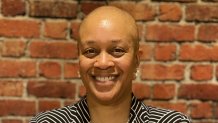
The work was part of a $4.75 million initiative funded during the Obama administration that ended when President Donald Trump took office.
"It's heartbreaking for us," Phillip Atiba Goff, a co-founder of the Center for Policing Equity, told NBC News, "because we feel like they were there and making progress and material changes that were really benefiting the community, and now we are not just back to where we started, we are further back. It's worse than when we started."
What Do Police Want?
The National Association of Police Organizations worked with Scott of South Carolina on the Republican Senate proposal for reform, said William Johnson, the organization’s executive director.
“In the broadest sense, I think there are some genuine calls for reform that are out there,” he said, the ones from Congress for example. “And there are other calls that are not really for reform, but rather for doing away with police completely."
Defunding police departments would be a mistake, he said. The need in marginalized communities for better social services, mental health care, jobs and education should not come at the cost of the vital role of police play, he said.
“Everybody wants good, ethical, honest, vigorous enforcement of just laws,” he said. “I think that’s true across the political spectrum.”
“We need to be demanding both.” he said.
Eliminating qualified immunity could be disastrous as far as recruiting or retaining police officers if they could be held personally financially liable while acting reasonably and in good faith but made a mistake about a law that was not “clearly established,” he said.
“You would have many, many officers just saying, ‘You know what, it’s not worth it,’” he said.
Proponents of doing away with qualified immunity say it creates too high a bar to challenge the officers in court.
Johnson objected to the prohibition proposed by Democrats on chokeholds or neck restraints that restrict blood flow, using as an example an officer fighting to save his or her own life.
“It’s beyond disheartening, it’s stunning, just the cold-bloodedness toward police,” he said of the Democratic proposal.
And as far as a national database, police are cautious about what is to be included, he said. If it is going to be credible, there must be due process for the officer involved so that it is fair and substantiated, he said.
How the US Stacks Up Against Europe
U.S. police officers use deadly force far more often than their European counterparts, They killed 18 times more often than police in Denmark in 2014, and were more lethal than police in France, Sweden and other European countries, according to Paul Hirschfield, an associate professor of sociology and criminal justice at Rutgers University in New Jersey.
One major reason: the number of guns on U.S. streets and the effect that has on how officers work. In Europe, police do not limit themselves to the shoot or don’t shoot scenarios that characterize training in the U.S., but can fire a warning shot or take other steps to de-escalate a confrontation, he said. By contrast, in the U.S., officers do encounter more suspects with guns, are highly sensitive to any object that might be one and react in a deadly way to misperceived threats, he said.
“Police are primed to expect that one day they will encounter an armed suspect,” he said.
The presence of guns in American life will remain but local officials, state legislators and governors can enact policies that could minimize harm, he said, many of which are now being put into place. They can prohibit chokeholds and strikes to someone’s head, for example, and decrease the use of SWAT teams save for hostage scenarios.

Hirschfield advocates adopting something closer to deadly force policies in effect in most European countries and which conform to the European Convention on Human Rights: allowing deadly force only “where it is absolutely necessary to protect the life of a person." That is opposed to when a police officer reasonably believes that someone poses a grave, imminent danger to themselves or others, according to the U.S. Supreme Court, though in recent years, more states have passed legislation governing when police officers can use lethal force.
The U.S. standard encourages actions that would not be tolerated in Europe, Hirshfield said, such as standing in front of a vehicle while ordering it to stop.
Another significant difference: some smaller departments are under pressure to raise money for their municipalities not only for their own budgets but also for general revenue. Ferguson, Missouri, where a police officer killed Michael Brown in 2014, traffic stops disproportionately affected black motorists and traffic fines were the second-largest source of revenue for the St. Louis suburb.
“Consequently, police are incentivized to conduct enforcement activities that can result in fines, impounding and court fees, and seizures of cash and other assets,” he said. “Naturally, such extractive forms of policing target the most vulnerable members of the community or people perceived as outsiders to the community.”
The U.S. should expand its training for police officers, now typically 21 weeks, he said. In most European countries the standard is two years, in Norway three years, which gives instructors opportunities to address mental illness, ethical behavior, minority culture and crisis intervention.
“‘Do I shot or not shoot,’ that’s not the decision you make on a daily basis,” he said. “That should not be such a large portion of the training.”
And departments should make disciplinary records public, he said.
Reforms Already Undertaken
Hirshfield singled out for praise some departments’ changes in training.
Las Vegas police, in response to officer-involved shootings, changed two key aspects of its officer field training, Quartz reported in 2015. It stressed conflict de-escalation and use of force scenarios that were more ambiguous and the number of its officer-involved shootings fell. Recently though the city has seen protests and calls to defund the police.
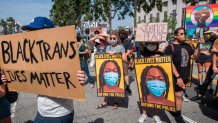
Miami prohibits the use of chokeholds or firing at a moving vehicle unless deadly force is being used against an officer or another person, Hirschfield noted. The city was monitored by the U.S. Department of Justice after seven Black men were shot and killed by Miami police officers in an eight-month period between 2010 and 2011 and the police were found to have engaged in a pattern of excessive force.
Since then the city has established a citizens review board, but in April, the department came under criticism after an officer handcuffed an African American doctor, Armen Henderson, who has been providing free coronavirus testing for homeless people in downtown Miami. The chief promised an investigation.
In Dallas, a revised foot pursuit policy also emphasized de-escalation, 12 years worth of data on police shootings was released and poor performing officers were fired, The Atlantic reported in 2016. And the Black Police Association of Greater Dallas called for giving civilians more power to review police actions, including demanding testimony from officers about alleged misconduct.
Now, the city is looking at additional police reforms and although the chief, U. Renee Hall, has marched with recent demonstrators, the department is under fire for corralling hundreds of peaceful protestors on a bridge at the beginning of June. Activists there want taxpayer dollars redirected to education, health care, mental health care and other social services.
Washington, D.C.’s, police department once had a reputation for using its firearms more than other large forces and it too was monitored by the Justice Department. In a column in The Washington Post in 2016, the independent monitor and a city councilwoman described a changed city, in which the number of officer-involved shootings remained low. And in June, the D.C. Council banned the use of chemical irritants or rubber bullets on peaceful protesters, disallowed the hiring officers with a history of serious misconduct and approved the quick release of names and body-camera footage of officers who use force and other changes. It curbed the role of the police union in disciplining officers.
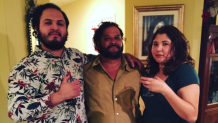
Back in Los Angeles, Corado, 31, has been working to pass a budget for the city that would divert money from the police department to social programs such as homeless and mentally ill services. Corado, whose family is suing the Los Angeles Police Department, said that he knew defunding the police department would go through many phases, with the focus now on the budget. And he acknowledges that there will always be the need for some officers to confront crime. How that will be reimagined will differ from community to community, from Los Angeles to Minneapolis, he said.
“No one is saying we don’t need public safety,” he said.
But he also believes crime will decrease if a community is taken care, its children educated and cared for, its mental health issues dealt with.
"It's going to take a long time," he said of bringing about change. "You're going to have to try to convince some people who bleed blue, as they say."

